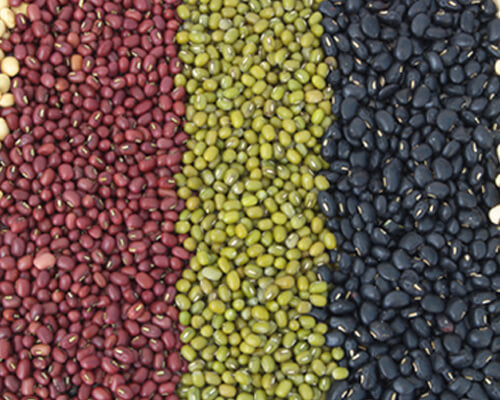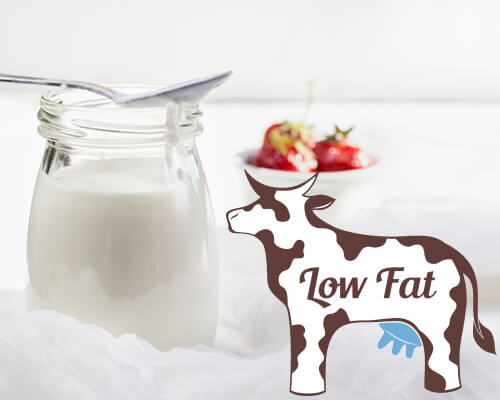Low Carb Pasta
If you can’t lose weight, and it seems like you’ve tried everything, it’s probably because you’re eating too many of the wrong kinds of carbohydrates. According to the dietary guidelines for Americans, about 45 to 65 percent of all calories consumed throughout the day should come from carbohydrates. Most people fall within these guidelines, and yet still have trouble losing weight. This is because the sources of carbohydrates that most people rely on are unhealthy, processed foods loaded with starch and sugars and lacking adequate levels of fiber. Even low carb pasta, bread, cereal, and flour often have more carbohydrates than necessary.
Starch, sugar, and fiber are the three main types of carbohydrates, and while they are all necessary for proper functioning of the body, it’s important that you consume more fiber and starch and less sugars. The reasoning behind this is because fiber and starch are both complex carbohydrates while sugar is a simple carbohydrate. Complex carbohydrates are higher in nutritional value than simple carbohydrates, and therefore better for you.
| Simple Carbohydrates Qualities | Complex Carbohydrates Qualities |
|
|
| Simple Carbohydrates Food Examples | Complex Carbohydrates Food Examples |
|
|
The most effective way to determine which carbohydrates are the best to eat, is by checking their glycemic index. The glycemic index is a system that classifies carbohydrates based on how quickly, and how high, they boost blood sugar levels. In most cases, foods that have high concentrations of complex carbohydrates will have a low glycemic index, and foods containing higher levels of sugar will have a high glycemic index.
Foods that contain low glycemic indexes are more beneficial to your system because they cause a lower, and gentler change in blood sugar. High glycemic indexes are associated with foods that cause quick spikes in blood sugar. The goal is to keep your blood sugar relatively level throughout the day to provide your body with the constant energy that it requires to function.
|
Low Glycemic Index |
Medium Glycemic Index |
High Glycemic Index |
|
|
|
Carbohydrates For Your Health
There are many health benefits of consuming the correct kinds of low glycemic leveled, complex carbohydrates including: energy production, disease avoidance, weight control, and promotion of a healthy and balanced diet. These benefits often reverse and become health hindrances if the wrong kinds of high glycemic indexed, simple carbohydrates are consumed instead. Many low carb pasta and bread options contain these high glycemic indexed, simple carbohydrates so even though they don’t have as many carbohydrates, they still have “bad” carbohydrates. It is this confusion of ‘good’ vs ‘bad’ carbohydrates that makes healthy eating a complicated practice in the minds of many people.
Benefits of Complex Carbohydrates
Energy Production – Carbohydrates are broken down from starches and sugars, during digestion, into simple sugars. These simple sugars are then able to be absorbed into the bloodstream where they become blood sugar, or blood glucose. Insulin then facilitates the saturation of glucose into the cells of the body and becomes the fuel source for the body’s energy production. The energy produced by the glucose will be burnt off during daily activities and exercise, leaving any remaining glucose to be stored for later use, or converted into fat.
Disease Avoidance – Studies have shown that the dietary fiber found in whole grains, vegetables, beans, and (some) fruits may have a hand in helping to reduce the risk of obesity and the development of type 2 diabetes. It is also worthy to note that cardiovascular diseases have a lower prevalence among people whose diets reflect the intake of low glycemic level foods.
Weight Control – The key to losing weight isn’t hidden in a low carb pasta and bread diet. In fact, it is important to maintain a balanced diet including healthy carbohydrates, when attempting weight loss. That means that you have to focus your diet around foods with low glycemic indexes and high sources of fiber. The fiber content in these foods will specifically aid in weight loss by making you feel fuller with less calorie consumption, as well as encourage the regulation of the digestive system.
Healthy & Balanced Diet – Everyone is searching for the magical answer to all of their health and diet answers, but they’re avoiding the answer that’s directly in front of their faces: balance. Balance is not the same as moderation. Where moderation leaves room for unhealthy food choices, balance does not. To eat a balanced diet is to follow the dietary guidelines for Americans laid out by the federal government, whose goal is to promote good health, healthy weights, and the prevention of chronic diseases.
Maintaining your diet and choosing the right types of carbohydrates is essential to leading a healthy lifestyle. The foods that you consume affect your overall health and the efficiency at which your body systems work together. It’s important to understand that not all carbohydrates are created equally, and likewise not all low carb pasta, bread, and cereal are as low carb as they should be.
“Good” – Low Glycemic Level Carbohydrates
Beans & Legumes – Legumes are both versatile and highly nutritious. With low fat content and high levels of potassium, magnesium, and iron they are a great alternative to meat in any recipe. If protein is your concern, you don’t need to worry. Legumes are also a rich source of protein that, depending on the source, closely rival the levels found in most meats. Legumes are a class of vegetables that actually include beans as well as lentils and peas. Furthermore, legumes are naturally cholesterol free, which makes them a great alternative for people living with, and trying to manage, high cholesterol.
Low-Fat Dairy – Dairy products are inherently great sources of protein, vitamin D and of course protein. Despite all of the benefits that dairy provides to your diet, it may also be a major source of fat consumption, which is one of the many reasons that you want to choose low-fat dairy. The higher the fat concentration of the dairy product, the higher it will be on the glycemic index scale, and the worse of an option it then becomes for you. When choosing low-fat dairy options, look for foods with 35% or less fat content in them.
Whole Grains – Many people are afraid of grains, due to the gluten scare, but it is important to remember that gluten itself is not unhealthy unless your body is intolerant to it. What is unhealthy is the refined, processed products that come from grain: white bread, all-purpose flour, and sugary cereals. Whole grains on the other hand, have not been processed and therefore are a healthy source of fiber, selenium, and magnesium. When buying your breads, and flours stick to whole grain options, and instead of getting the sugary processed cereals, buy unflavored warm oatmeal and brighten it up with the addition of fruits, nuts, and spices.
Fiberful Fruits & Vegetables – When purchasing fruits and vegetables it’s important to make sure that you buy them whole, as they will then provide you with more fiber and make you feel fuller, faster, with less calories being integrated into your diet. An added benefit of incorporating more fresh or frozen fruits into your diet is that these foods naturally have higher levels of sugar in them, which will satisfy your sweet tooth, without the introduction of added sugars or sugar substitutes.
Isopasta – Cutting “bad” carbohydrates out of your diet used to mean that you had to eliminate all pasta from your diet, even whole wheat, ‘high protein’, and low carb pasta had carbohydrate, sugar, and cholesterol levels that were too high to be healthy. These brands haven’t changed their recipes, but a new brand has changed what it means to be a low carb pasta. Isopasta provides the lowest net carbohydrates of any other pasta on the market, at a staggeringly low 7 net grams per 50 gram serving. The amount of sugar present in each serving is under a single gram, and there are less that 4 grams of cholesterol naturally present in Isopasta, a truly revolutionary brand of low carb pasta.
Low carb pasta used to mean that a single serving had anywhere from 17-36 net grams of carbohydrates, but Isopasta is breaking the mold set by Barilla, Dreamfields, Al Dente, and Banza and introducing a pasta with just 7 net grams of carbs per serving. In addition to the lower number of carbohydrate and thus lower positioning on the glycemic index, Isopasta also raised the protein bar. This low carb pasta is high in protein making it an excellent choice for anyone looking to raise their nutritional intake without also creating a spike in their blood sugar. Other companies boast high protein pasta at a mere 7-15 grams per serving, but Isopasta easily blows those numbers out of the water with a staggering 30 grams of protein in a single serving.
One of the main reasons that companies claiming to have low carb pasta don’t actually have healthy pasta options is because they’re still making their noodles from either refined or unrefined wheat grains. Although the unrefined wheat grain pastas are far superior on the glycemic index, they are still loaded with unnecessary carbohydrates, and lack the benefits of protein. What makes Isopasta so unique and special is that it’s made from soy protein, whey protein, and pea protein and not grain. This unique combination of ingredients is what facilitates such high protein, and low carb pasta numbers.
Due to the differences in ingredients, the cook time of isopasta is a bit longer than that of traditional pastas. Most other low carb pasta suggests a cook time of 7-12 minutes, depending on the brand, for an al dente finished consistency. The density of isopasta ingredients require about 17-21 minutes of cooking to create the perfect al dente taste. Besides the time required to reach the correct texture, isopasta cooks the same as any other “low carb pasta”, but is significantly healthier for you, and provides a substantial amount more nutrients than any other brand currently on the market.
There are many people who, despite eating a fairly healthy diet balanced with fish, meat, fruits, and vegetables, are not ingesting enough protein in their diet. They are depriving their body of the energy it needs to function properly. According to the recommended dietary allowance (RDA), most people should be eating more protein than they actually are. There seems to be a misconception that the RDA serves as a guideline for the maximum amount of certain nutrients that a person should consume, when in reality it is often the minimum amount of the nutrient that your body needs to fight off illnesses, and live healthily. Due to this confusion, too many people are cutting back on their already too slim protein consumption, causing a considerable deficiency in their diets.
Substituting a true low carb pasta like Isopasta for your current pasta choice will benefit your body in many ways. First of all, you will be cutting down on your carbohydrate intake. This alone has a multitude of benefits. You’ll cut down on the amount of glucose that your body creates, which will make sure that your blood sugar remains steady rather than spiking and dropping inconsistently. Your body will not have to work as hard to produce enough insulin to handle a random spike in blood sugar, meaning that you will be less likely to develop type 2 diabetes. Most importantly though, you’ll easily cut out foods with a higher glycemic index, without giving up your favorite pasta dishes.
The other major benefit that Isopasta provides you with is an increase in protein consumption, without an extensive change to your diet. Continue to cook your pasta dense meals, and feel fuller faster, and stay satisfied longer. Quit feeling guilty when you indulge in pasta pesto dishes, chicken parmigiana, or baked ziti, because you’ll actually be doing your body a favor by giving it more protein, while simultaneously avoiding unnecessary added carbohydrates, sugars, and calories.
Low carb diets are no longer something that you have to suffer through, or fear. The options for “good” carbohydrates that fall low on the glycemic index are plentiful and now with a low carb pasta that actually delivers the promise that it boasts on the packaging, you won’t be stuck with a tremendous or shocking change to your dietary habits. Embracing the benefits have never been easier, or more sustainable than they are today. Say goodbye to your excuses, and hello to better health.
Sources:
“Dietary Guidelines for Americans 2015–2020 8th Edition.” 2015-2020 Dietary Guidelines. Accessed January 29, 2016. http://health.gov/dietaryguidelines/2015/guidelines/.
“Nutrition and Healthy Eating.” Beans and Other Legumes: Cooking Tips. July 4, 2014. Accessed January 29, 2016. http://www.mayoclinic.org/healthy-lifestyle/nutrition-and-healthy-eating/in-depth/legumes/art-20044278
“Nutrition and Healthy Eating.” Carbohydrates: How Carbs Fit into a Healthy Diet. May 2, 2014. Accessed January 29, 2016. http://www.mayoclinic.org/healthy-lifestyle/nutrition-and-healthy-eating/in-depth/carbohydrates/art-20045705.
“Nutrition and Healthy Eating.” Carbohydrates: How Carbs Fit into a Healthy Diet. May 2, 2014. Accessed January 29, 2016. http://www.mayoclinic.org/healthy-lifestyle/nutrition-and-healthy-eating/in-depth/carbohydrates/art-20045705?pg=2.
“| Choose MyPlate.” Choose MyPlate. January 7, 2016. Accessed January 29, 2016. http://www.choosemyplate.gov/.
Cicetti, Fred. “Good Carbs, Bad Carbs: What You Need to Know.” LiveScience. February 28, 2013. Accessed January 29, 2016. http://www.livescience.com/36855-good-carbs-bad-carbs-what-you-need-to-know.html.
“Nutrition and Healthy Eating.” DASH Diet: Healthy Eating to Lower Your Blood Pressure. May 15, 2013. Accessed January 29, 2016. http://www.mayoclinic.org/healthy-lifestyle/nutrition-and-healthy-eating/in-depth/dash-diet/art-20048456.
“Glycemic Index.” Glycemic Index. October 12, 2015. Accessed January 29, 2016. http://www.glycemicindex.com/.
“Glycemic Index and Glycemic Load for 100 Foods – Harvard Health.” Harvard Health. August 27, 2015. Accessed January 29, 2016.
“Choosing Carbohydrates Wisely.” NutritionMD.org ::. Accessed January 29, 2016. http://www.nutritionmd.org/nutrition_tips/nutrition_tips_understand_foods/carbs_choosing.html.
Pendick, Daniel. “How Much Protein Do You Need Every Day? – Harvard Health Blog.” Harvard Health Blog RSS. June 18, 2015. Accessed January 29, 2016. http://www.health.harvard.edu/blog/how-much-protein-do-you-need-every-day-201506188096.
“Examples of Simple and Complex Carbohydrates.” Sugar Addiction. Accessed January 29, 2016. http://howtothinkthin.com/instincts2.htm.
“Carbohydrates.” The Nutrition Source. Accessed January 29, 2016. http://www.hsph.harvard.edu/nutritionsource/carbohydrates/.
“Carbohydrates: MedlinePlus Medical Encyclopedia.” U.S National Library of Medicine. January 13, 2016. Accessed January 29, 2016. https://www.nlm.nih.gov/medlineplus/ency/article/002469.htm.
The post Low Carb Pasta appeared first on ISOLATOR FITNESS BLOG.
















